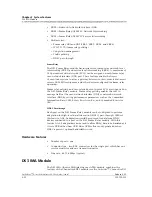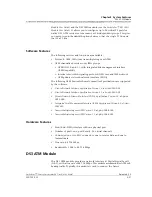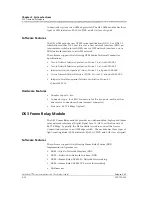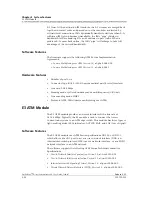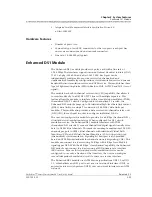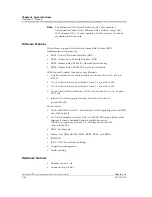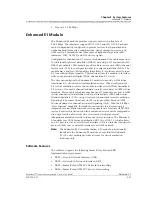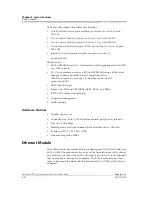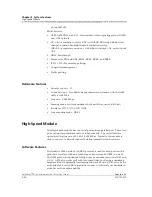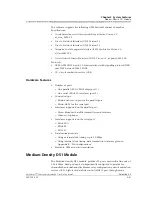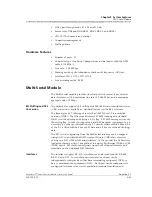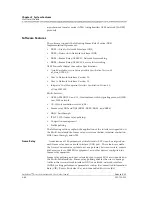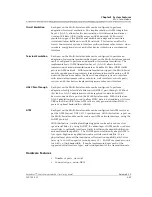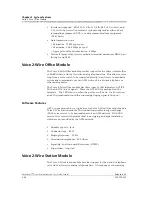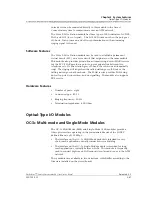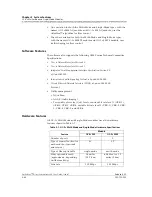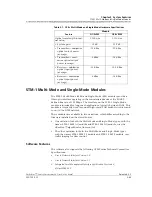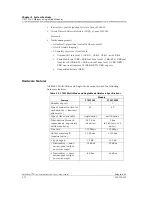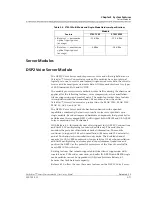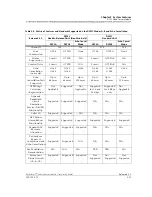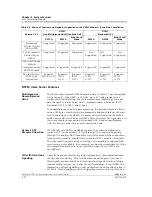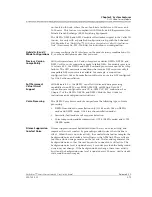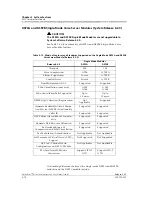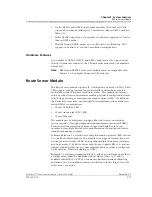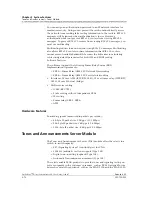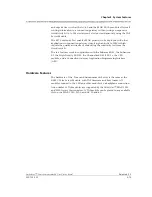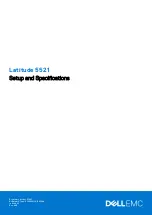
Chapter 3 System Features
Multi-Serial Module
3-64
255-700-025
PacketStar
™
Access Concentrator 60 User Guide
, Issue 1
Release 6.3.0
asynchronous transfer mode (ATM) (using limitless ATM network [LANET]
protocol).
Software Features
The software supports the following Frame Relay Forum (FRF)
Implementation Agreements:
•
FRF.1—User-to-Network Interface (UNI)
•
FRF.2—Network-to-Network Interface (NNI)
•
FRF.5—Frame Relay/ATM PVC Network Interworking
•
FRF.8—Frame Relay/ATM PVC Service Interworking
ATM Forum Technical Committee Specifications:
•
Circuit Emulation Service Interoperability Specification Version 2.0
af_vtoa_0078.00
•
User to Network Interface Version 3.0
•
User to Network Interface Version 3.1
•
Integrated Local Management Interface Specification Version 4.0,
af-ilmi-0065.000
Multi-Services:
•
ATM: ATM UNI 3.0 and 3.1; Interim inter-switch signaling protocol (IISP)
user, IISP network
•
CE: Circuit emulation service (CES)
•
Frame relay UNI and NNI (FRF.1, FRF.2, FRF.5, and FRF.8)
•
HDLC Passthrough
•
ITU-T I.370 (frame relay policing)
•
Congestion management
•
Traffic policing
The following sections explain the application of the interfaces supported on
the Multi-Serial module: frame relay, circuit emulation, terminal emulation,
HDLC pass-through, and ATM.
Frame Relay
A maximum of 350 permanent virtual circuits (PVCs) can be assigned on
each frame relay user-network interface (UNI) port. These features enable
the Access Concentrator system to act as a gateway between routers, remote
dial-access servers, IBM SNA equipment, and other devices configured for
frame-relay operation.
Frame relay policing, and user-selected point-to-point SVCs are supported on
the Multi-Serial module. Frame relay policing enables the user to manage
traffic at the user-network interface (UNI) or network-network interface
(NNI) by setting performance parameters such as the Committed Information
Rate (CIR), Excess Burst size (Be), and Committed Burst size (Bc).

